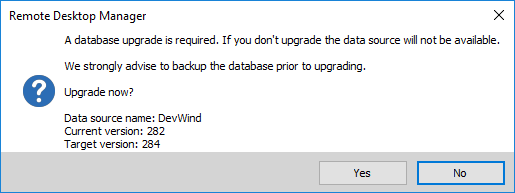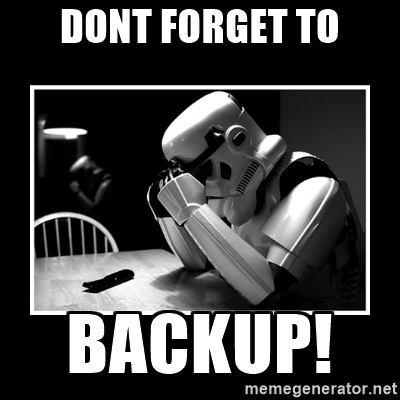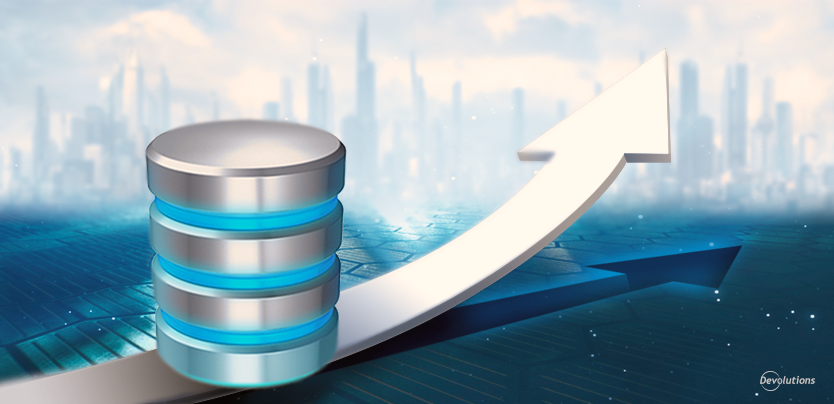Have you ever wondered why Remote Desktop Manager sometimes asks you to upgrade the database – and other times it doesn’t? Well, the question crossed my mind the last time I was prompted to upgrade, so I did some digging, and here’s the simple answer.
A database upgrade – which affects your advanced data sources (SQL Server, MySQL, MariaDB, etc.) – is typically required when updating to a new version of Remote Desktop Manager (e.g. from v11 to v12). And on occasion, it’s necessary when updating to a sub-version (e.g. v11.1 to v11.2).

The reason for the upgrade is to ensure that new RDM features, such as a new tab or new connection logs, are properly added to your database. Moreover, if the new version of Remote Desktop Manager modifies your database, then an upgrade is required. But when your advanced data sources aren’t affected, there’s no need to upgrade – and so you aren’t asked to do so. See? I told you it was simple!
Let’s not forget some very important steps when executing a database upgrade! The user performing the update must be the administrator of the system. Moreover, since working in a team environment make certain to be the sole user connected to the database during the database update, you will then be able to proceed with the update on all workstations.

Also, we strongly recommend that you backup your database prior to upgrading, just as a best practice. Better safe than sorry!
As always, please let us know your thoughts by using the comment feature of the blog. You can also visit our forums to get help and submit feature requests, you can find them here.




